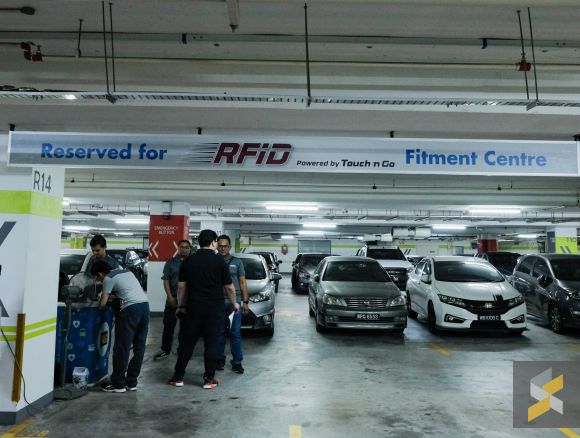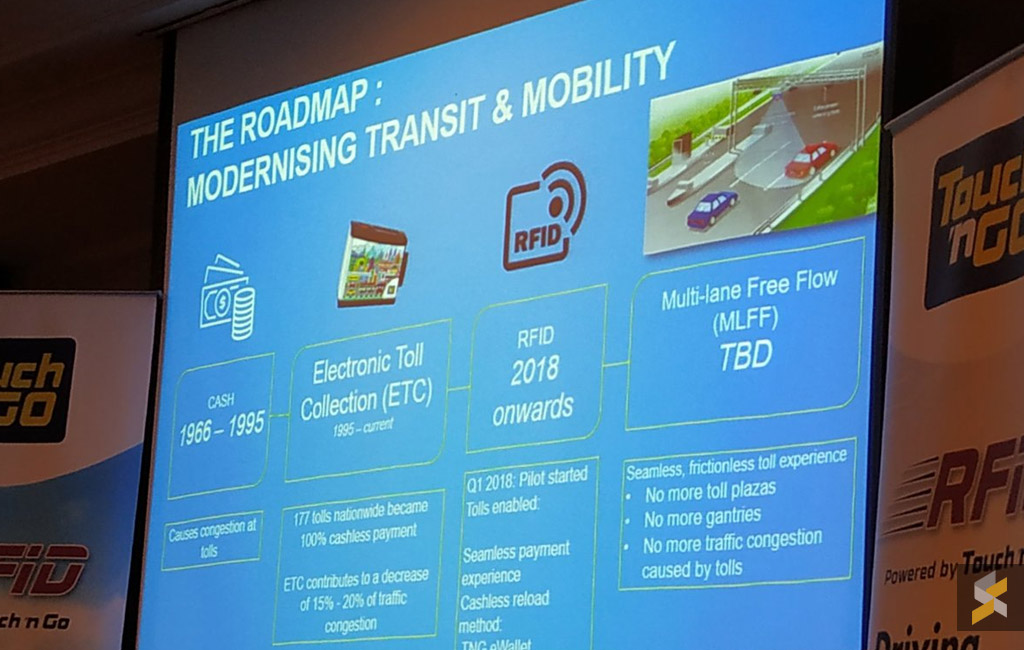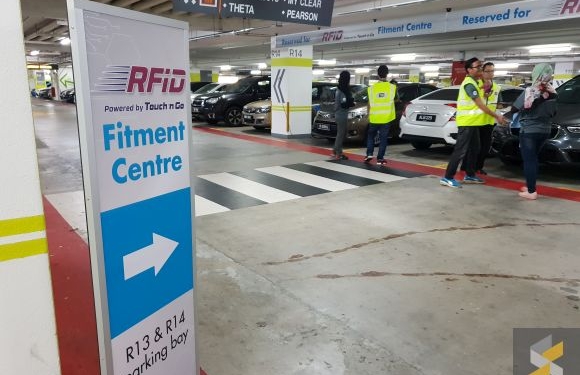
If you missed the opportunity to get your vehicle fitted with Touch ‘n Go (TNG) RFID, you’ll be happy to know that TNG has re-opened registrations for its RFID tags. You can register to become a TNG RFID user, here. TNG say that slots are limited, so you better hurry.
TNG has also increased the number of RFID fitment centres gradually. There are now a total of 32 fitments centres in Peninsular Malaysia with 25 in the Klang Valley, 2 in the northern region and 5 in the southern region with more being introduced almost every day.
According to TNG, there are over 100,000 RFID-enabled vehicles on Malaysian roads today. This is no small feat when you consider that TNG first introduced its RFID toll payment system sometime in September 2018. That’s a running rate of over 20,000 vehicles fitted with TNG FRID a month!
But that’s a small drop in the ocean. The Malaysian Automotive Association (MAA) say that there are close to 30 million registered vehicles in Malaysia since 2017 and that number is only expected to grow. Last year, MAA said close to 600,000 vehicles were registered.
That means less than 1% of registered vehicles are RFID-enabled today.
A future without traffic jams powered by RFID
TNG envisions a day when we do away with the slow and inconvenient cash or NFC-enabled payments via TNG cards at toll booth. The current method slows traffic flow and during peak times toll booths are partly to blame for traffic congestions.

If it was entirely up to TNG, our highways would already be fitted with what the company calls Multi-Lane Free Flow (MLFF) payment system. Powered by RFID technology, MLFF does away with toll booths altogether and allow vehicles to move smoothly but still enable highway concessionaires to collect payment. This is similar to the Electronic Road Pricing (ERP) system used in Singapore right now. The island state implemented ERP over 20 years ago!
For now, a smooth and seamless MLFF system on our roads and highways remain a dream. It is certainly possible to have highways without toll booths but achieving this is not on TNG alone. Highway operators, the authorities and policy makers all need to sit at the same and discuss how to make this happen for the benefit of the Malaysian people.
Having a seamless toll collection system is beyond just enabling a high-tech payment system, the benefits can have a positive ripple-effect that improve the quality of living for us all. Less congestion means less time wasted being stuck in traffic. In 2017, a study commissioned by Uber and conducted by the Boston Consulting Group revealed that road-users in Kuala Lumpur spend over 50 minutes a day stuck in traffic.
And that’s just the tip of the iceberg.
A World Bank study showed that in 2014, economic losses due to traffic congestion in the Klang Valley was RM20bil – that’s RM54mil a day. Most of this cost is associated with lost productivity, followed by wasted fuel and environmental damage caused by tailpipe exhaust fumes. This is excluding the estimated RM1bil to RM2 billion of fuel wasted because cars are being stuck in traffic!
Less traffic congestion also brings with it other benefits like improved air quality and a society that’s less dependent on cars.
There’s light at the end of the tunnel.
TNG with its RFID system is one key piece in this huge puzzle and it’s great to see TNG taking the leap to develop a complete RFID ecosystem despite the challenges.
Here at SoyaCincau.com, we’ve never been short on
But TNG improved and they improved quickly. The company’s rapid evolution to becoming a digital-driven company is nothing short of amazing if you ask me. In the span of five short months it already has over 100,000 RFID-enabled vehicles on the road and over 3 million users on its digital payment app.
Even if TNG may not be able to solve Malaysia’s congestion problem all on its own, the company certainly has the momentum to get things started. I’m hoping that they do.








